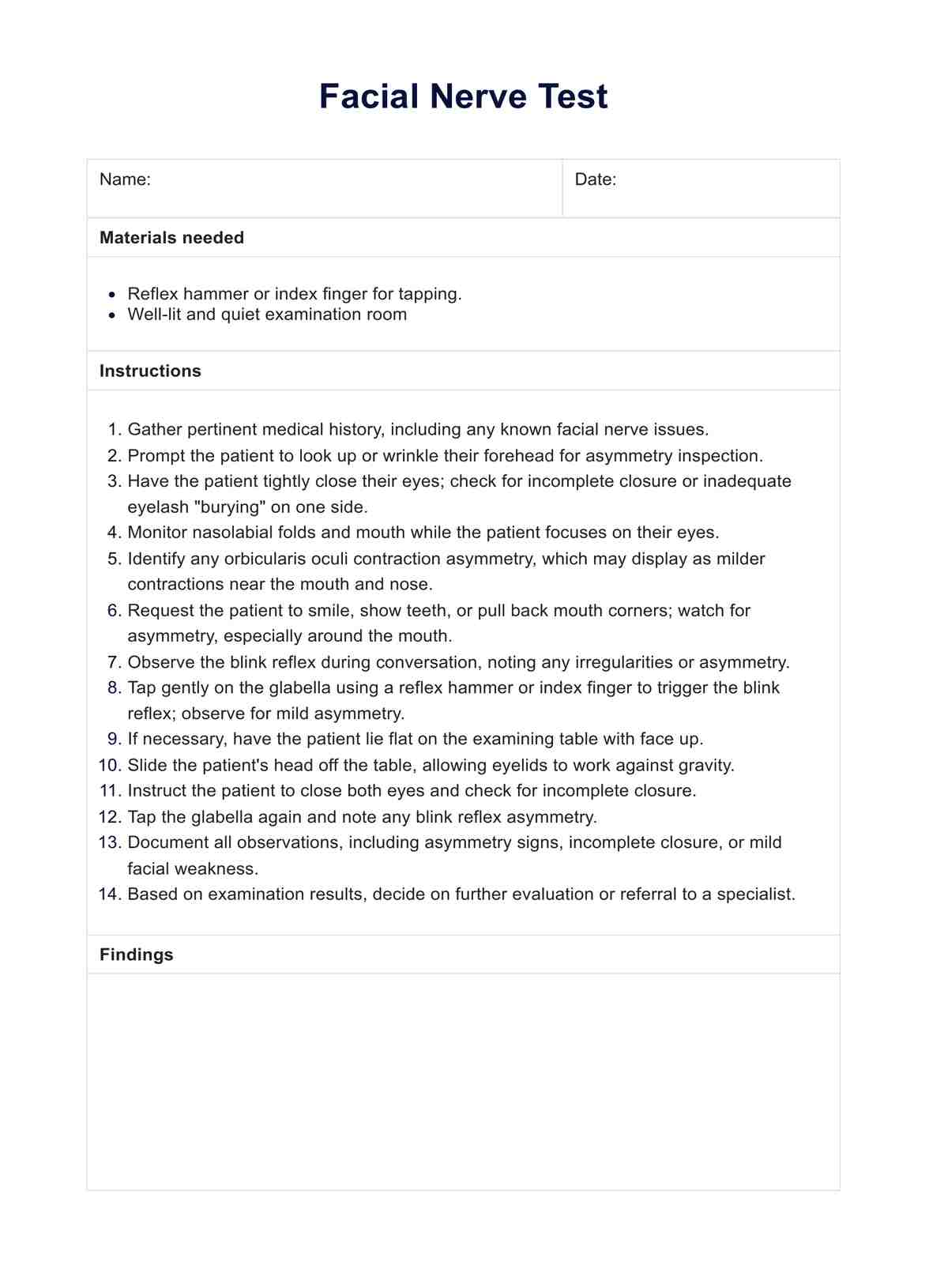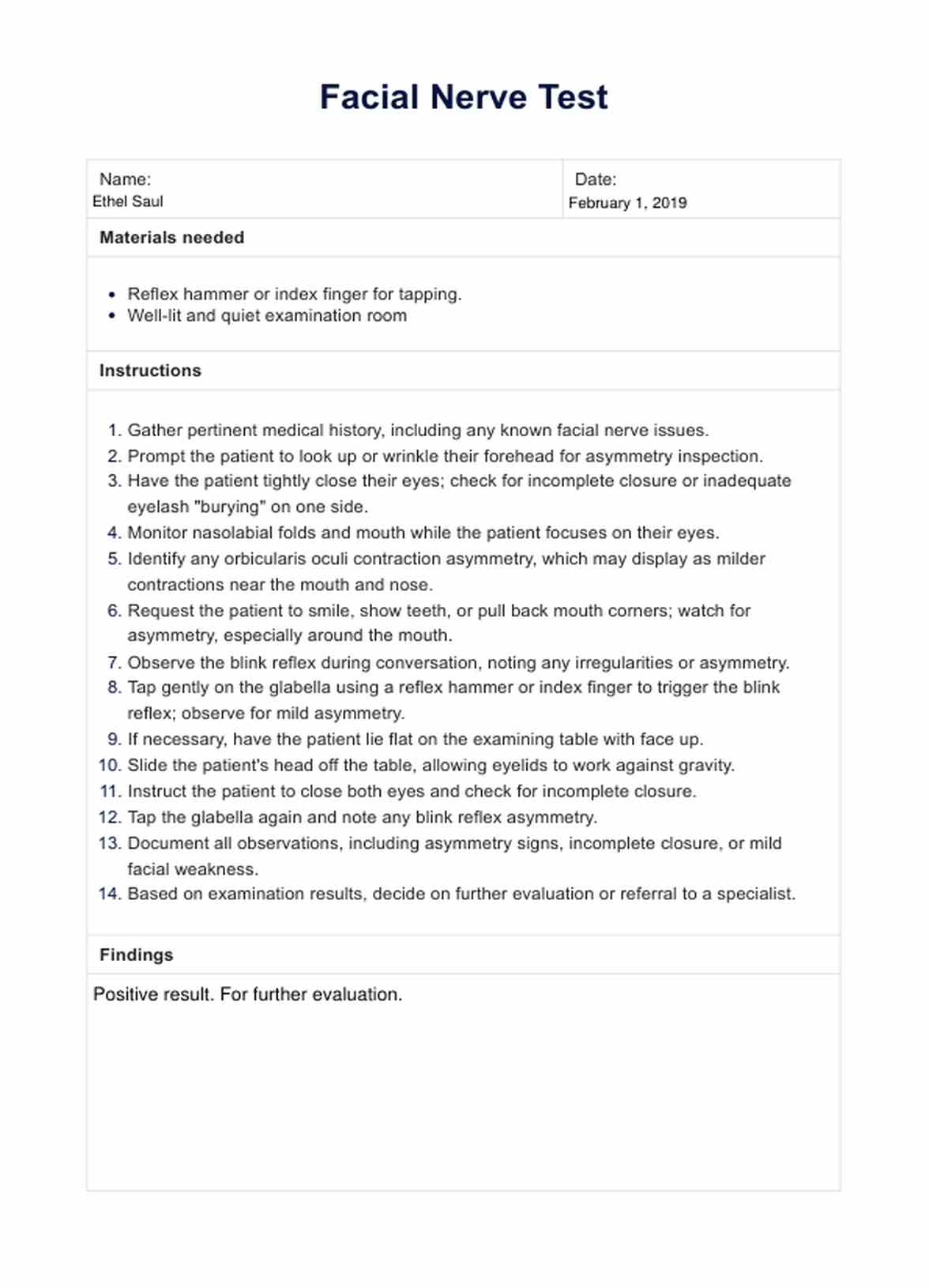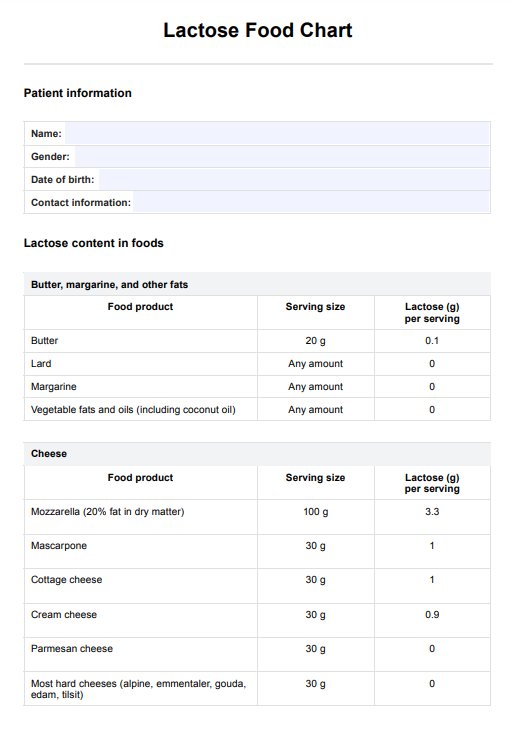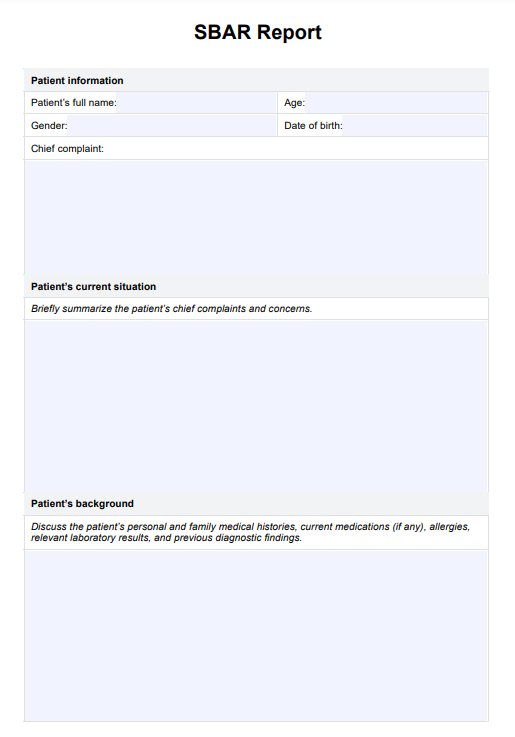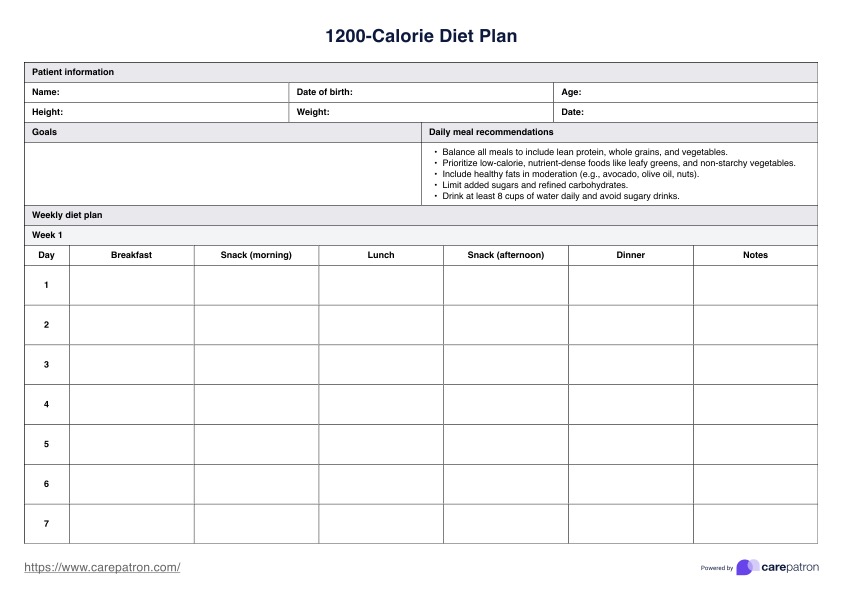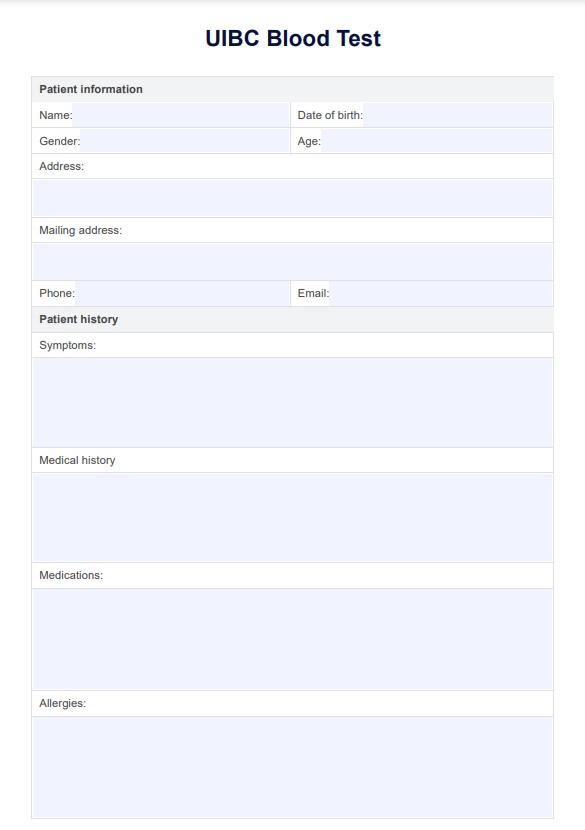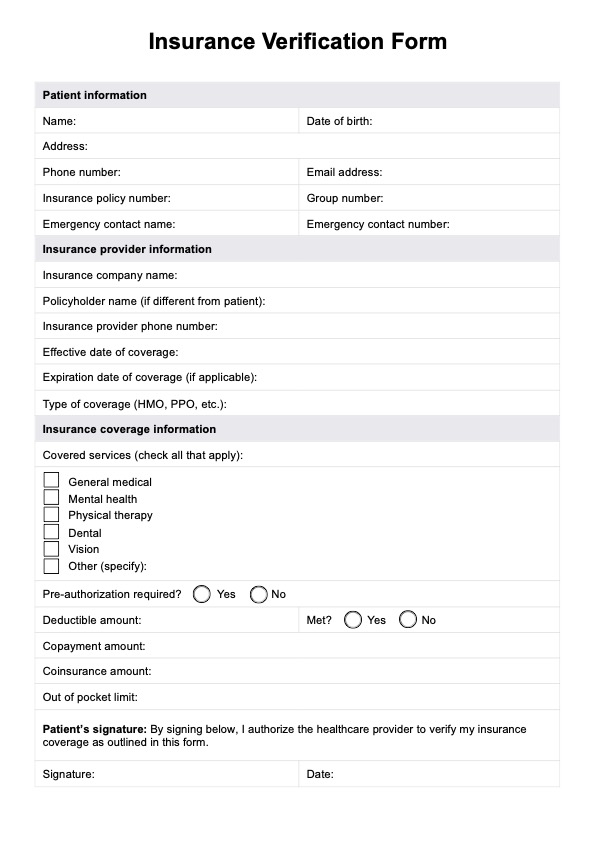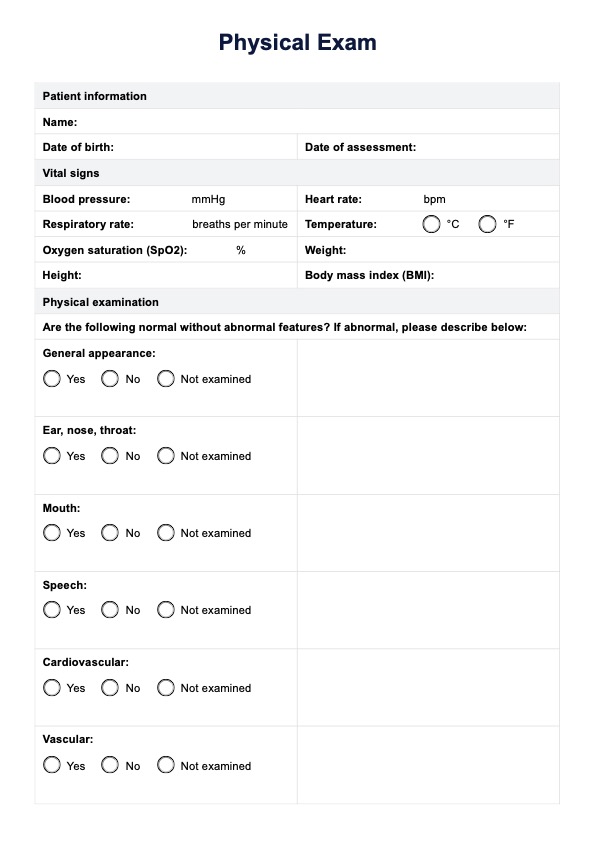Facial Nerve Test
Access a free Facial Nerve Test template to streamline your documentation. Learn how to perform a facial nerve exam with this guide.


Understanding the facial nerve and its functions
The facial nerve, also known as the seventh cranial nerve, is responsible for controlling the muscles of the face and enabling facial expressions. It is one of twelve pairs of cranial nerves that originate from the brain and play important roles in various bodily functions.
The facial nerve has three main divisions - motor, sensory, and parasympathetic - each with its own specific functions. The motor division controls the muscles of facial expression, the sensory division supplies sensation to parts of the face and tongue, and the parasympathetic division controls tear production and salivation (Seneviratne & Patel, 2020).
These divisions work together to control movements of the face, sensation in the tongue and ear, and secretion of saliva and tears (Walker, 1990). Moreover, the facial nerve also plays a crucial role in maintaining the corneal reflex, which protects the eye from irritants (Dulak & Naqvi, 2023).
Facial Nerve Test Template
Facial Nerve Test Example
Facial nerve disorders
Various disorders can affect the facial nerve, leading to impairments in facial expression and other functions. Some of these are:
Bell's Palsy
One of the most common facial nerve disorders is Bell's palsy, which is a condition that causes temporary weakness or paralysis of the facial muscles. The exact cause of this disorder is unknown, but it is believed to be due to inflammation and swelling of the facial nerve.
Trigeminal nerve lesions
Lesions or damage to the trigeminal nerve, which is responsible for sensory function in the face, can also affect facial nerve function. This can result in a loss of sensation or altered sensation in parts of the face.
Ramsay Hunt Syndrome
Ramsay Hunt Syndrome is a viral infection that affects the facial nerve and causes facial paralysis and other symptoms such as ear pain and rash. It is caused by the varicella-zoster virus, which also causes chickenpox and shingles.
Facial nerve tumors
Tumors can also affect the facial nerve, leading to compression or damage. These tumors can be benign or malignant, and they may require surgical removal depending on their size and location.
Disorders of the glossopharyngeal and vagus nerves
Disorders of these cranial nerves can lead to salivation, taste, and gag reflex issues, as the glossopharyngeal nerve innervates the parotid gland and affects the sensation in the anterior two-thirds of the tongue. The vagus nerve is especially critical, as it impacts voice and swallowing through the recurrent laryngeal nerve and contributes to the gag reflex.
Assessing the cranial nerve II
A cranial nerve examination is a standard neurological assessment, and the facial nerve can be assessed using the Facial Nerve Test.
This test involves asking the patient to perform various facial movements, such as smiling, frowning, raising their eyebrows, and closing their eyes tightly. The physician will also check for any weakness or asymmetry in these movements.
In addition to the Facial Nerve Test, other assessments may include checking the corneal reflex, which helps to evaluate the function of both the facial nerve (CN VII) responsible for the blinking reflex, and the trigeminal nerve (CN V), which provides the sensation. Cranial nerves are fundamental in conveying information between the brain and various parts of the body; hence, examining each is critical.
For instance, the accessory nerve (CN XI) is tested by examining the strength and movement of the shoulder and neck muscles. In contrast, the olfactory nerve (CN I) is evaluated through the patient's ability to smell.
Similarly, the optic nerve (CN II) is crucial for vision and is assessed using various methods, such as the visual acuity test and examining the responses of the pupil to light. Each cranial nerve provides unique insights into the nervous system’s health and potential neurological disorders.
How to use this Facial Nerve Test template
Our free Facial Nerve Test template makes it easy for you to conduct the exam and document findings. Follow these steps to get started:
Step 1: Get a copy of the template
Access the free Facial Nerve Test template using the link on this page. You may also get a copy via the Careparton app or our resources library. You can either print the template or use it in a digital format.
Step 2: Prepare your patient for examination
Explain the purpose and procedure of the exam to your patient, and ensure they are comfortable throughout the process. Ask the patient to remove any makeup or facial accessories that may interfere with the examination.
Step 4: Perform the Facial Nerve Test
Follow the steps on the template to test all aspects of cranial nerve function, including motor and sensory functions.
Step 5: Document your findings
Record any abnormalities or notable observations during the exam in the designated spaces on the template. This will be a comprehensive record of the patient's cranial nerve health.
Step 6: Share results with your patient
After completing the Facial Nerve Test, share your findings with the patient and discuss the next steps, if necessary. This will allow them to understand their cranial nerve health and take any necessary actions for their well-being.
Benefits and limitations of the Facial Nerve Test
Before conducting the Facial Nerve Test, it is essential to understand its benefits and limitations. Here's what you can gain by doing the test:
- Assess the overall health of the facial nerve
- Detect any potential issues with cranial nerve function
- Provides a comprehensive record of the patient's cranial nerve health
However, the test is not an end-all-be-all solution. Be aware of the following limitations:
- It only tests for motor and sensory functions of the facial nerve, may not provide a complete picture of its function
- It may not be suitable for patients with certain medical conditions or physical limitations
- It requires proper training and experience to perform accurately
The Facial Nerve Test is a valuable tool in assessing cranial nerve function, specifically of the facial nerve. It is essential to conduct this test regularly and document findings to track any changes in cranial nerve health over time. However, it should not be solely relied upon and should be used with other diagnostic tests to understand the patient's overall health better.
References
Dulak, D., & Naqvi, I. A. (2023). Neuroanatomy, cranial nerve 7 (facial). In StatPearls. StatPearls Publishing; National Center for Biotechnology Information. https://www.ncbi.nlm.nih.gov/books/NBK526119/
Seneviratne, S. O., & Patel, B. C. (2020). Facial nerve anatomy and clinical applications. In StatPearls. StatPearls Publishing; National Center for Biotechnology Information. https://www.ncbi.nlm.nih.gov/books/NBK554569/
Walker, H. K. (1990). Cranial Nerve VII: The Facial Nerve and Taste. In Clinical Methods: the History, Physical, and Laboratory Examinations. Butterworths. https://www.ncbi.nlm.nih.gov/books/NBK385/
Commonly asked questions
The Facial Nerve Test is an assessment used to determine the integrity and function of the facial nerve, which is crucial after parotid gland surgery due to the proximity of the facial nerve to the surgical site. It can help detect any nerve impairment or damage post-operation.
While the primary focus of the Facial Nerve Test is on the facial nerve, it may provide incidental information about the oculomotor nerve function through observation of eye movements and eyelid closure during the test.
The Facial Nerve Test itself does not directly assess the gag reflex as the vagus nerve and the glossopharyngeal nerve mediate this reflex. However, ask the patient to perform specific movements that can indirectly indicate whether the gag reflex is intact.
The Facial Nerve Test can include assessing the patient's ability to taste on the anterior two-thirds of the tongue, as the chorda tympani branch of the facial nerve facilitates this region's sensory taste pathways.


